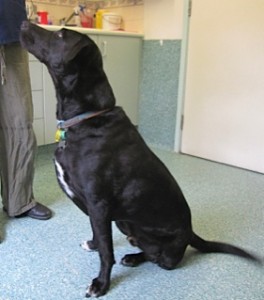Our pets can’t tell us what they are feeling in words, however through observing their body language, we can notice changes in their behaviour that may indicate pain.
Pain can occur with a vast array of chronic diseases, some not so obvious, for example dental disease, arthritis, back pain, ear infections, pancreatitis and cancer.
Top five signs of chronic pain are:
- Decreased Activity. Is your dog less enthusiastic for walks lately? Does your cat lay around more than usual or have they stopped climbing on to their favourite perch? Be careful not to assume this is normal ageing. There could be a medical condition that will improve with treatment.
- Changes in habits. Is your cat grooming less? Has your dog stopped jumping into the car or onto furniture? Are they interacting less with family? Reluctance to use stairs or groom can often occur with back or joint pain.
- Loss of toilet training. Dogs and cats might start to toilet inside if it hurts too much to walk to their usual spot, squeeze through the dog door or navigate steps. It could be painful to squat.
- Lameness. Is your pet stiff when getting out of bed, hunched or favouring a leg? You might see them shifting their weight or unable to stand in one place for long if their joints are aching.
- Aggression. Perhaps your pet is growling or snapping when petted to protect a painful area. Are they avoiding a playmate who asks for a tumble because it’s going to hurt?
Detecting chronic pain in your pet can be challenging. Body language is their only way to tell us when something is wrong, physically or emotionally.
Watch carefully for changes in their behaviour and contact the practice to arrange a check up if you notice a change in your pet’s behaviour.





 We have seen an upsurge in dogs with sun induced skin cancers in the last month or so. Most of these are on the bellies of Staffies or Jack Russells that love to lie on their backs in the sun.These cancers can be difficult to remove completely if they are not caught early and will recur if the sunbaking continues.
We have seen an upsurge in dogs with sun induced skin cancers in the last month or so. Most of these are on the bellies of Staffies or Jack Russells that love to lie on their backs in the sun.These cancers can be difficult to remove completely if they are not caught early and will recur if the sunbaking continues.